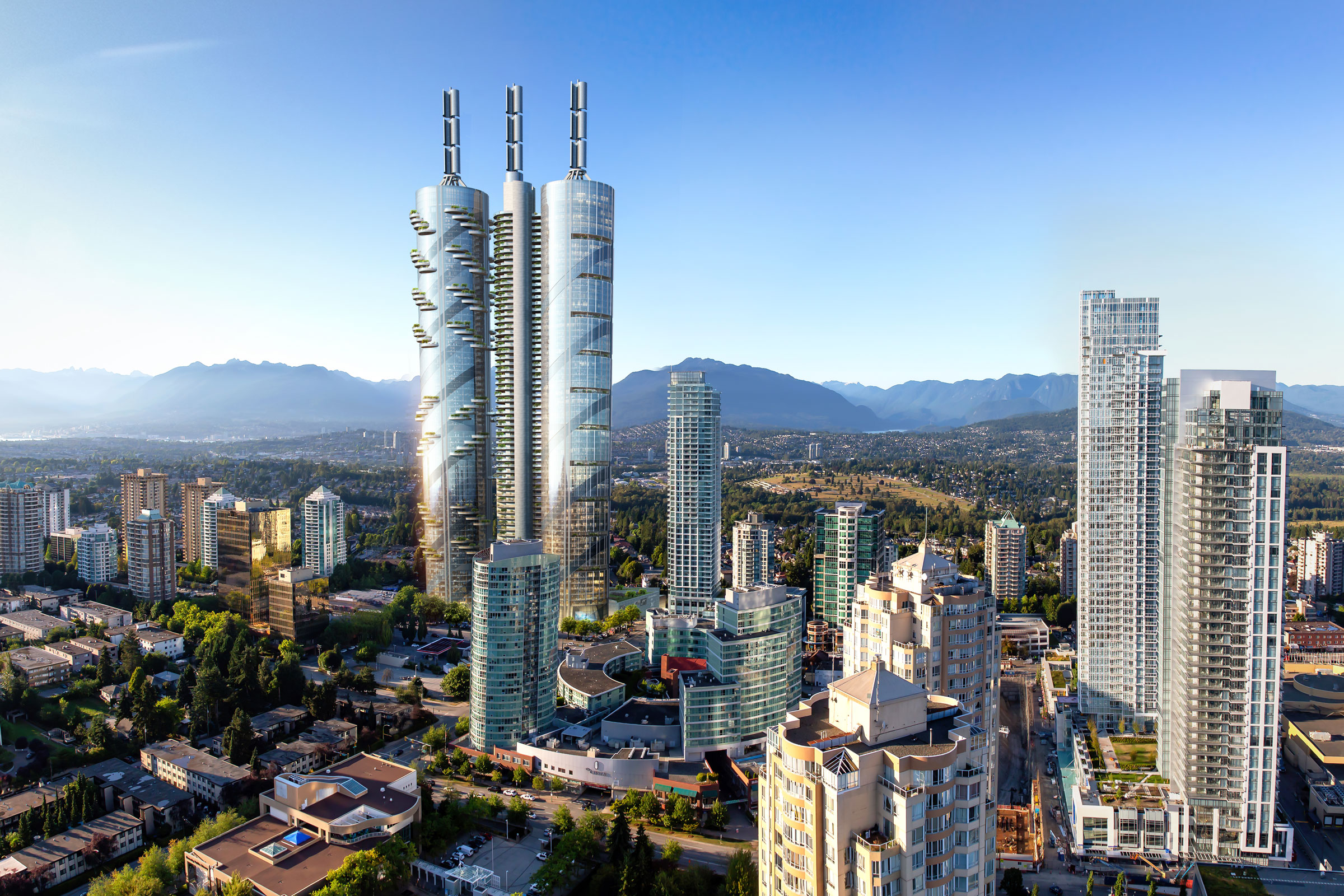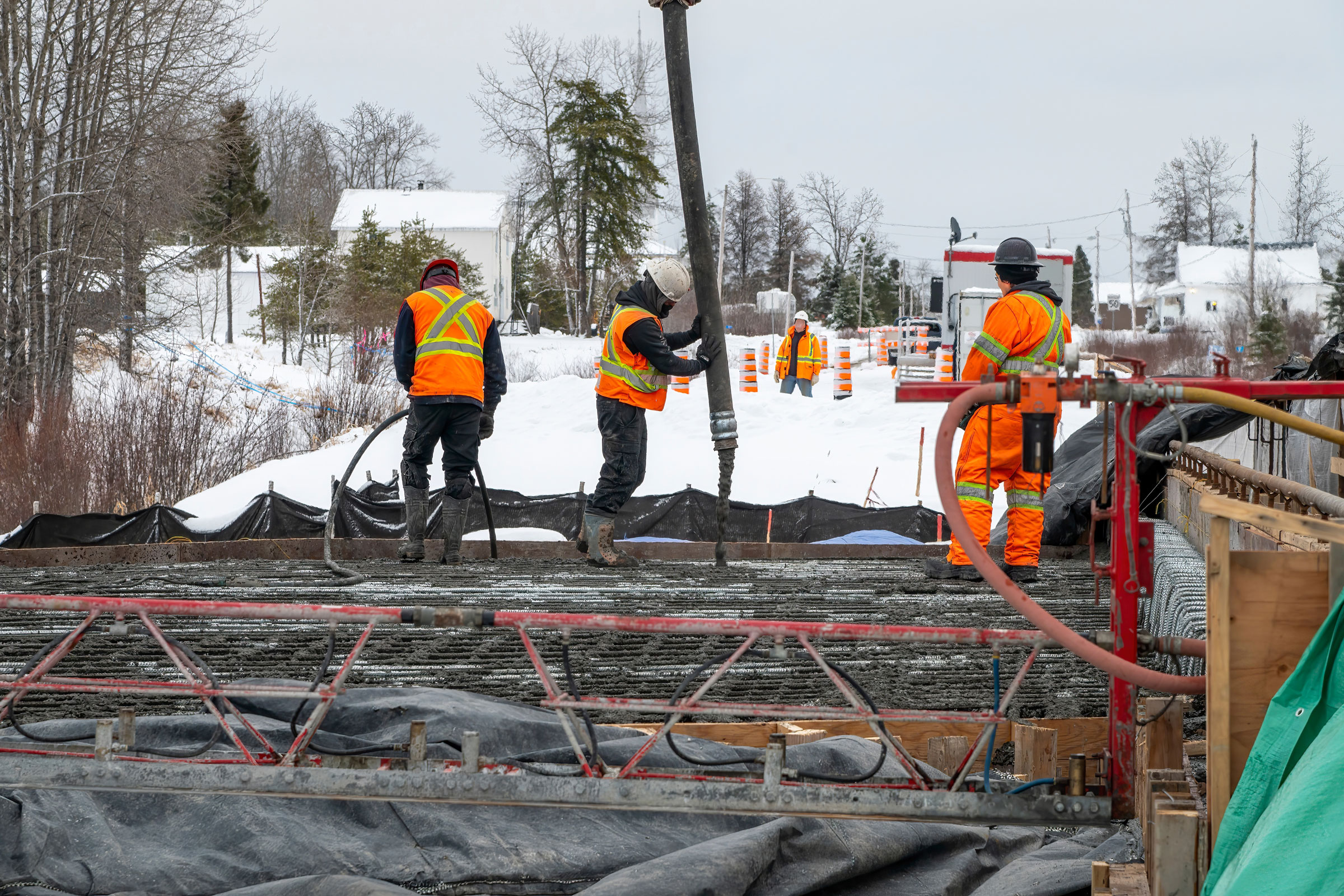Story at a glance:
- As the pace of economic, social, and environmental change continues to accelerate, building must be more responsive and adaptable to a varied range of uses over time.
- The unTower is a new use-neutral skyscraper concept by a team of architects and engineers that means our cityscape is not confined to a fixed set of uses.
- The building’s structure means function and programming easily adapt from health care facility to office to residential space or hotel, depending on needs.
- 35% of the world’s landfills is made up of construction and demolition waste generated by tear-downs, rebuilding, and remodeling to meet the modern city’s ever-changing use requirements. Creating a use-neutral building that can adapt to market demands extends the building’s useful life.
As the pace of technological, environmental, cultural, and economic change continues to accelerate, it is no longer possible to confidently predict occupant needs and desires over the long term. Increasingly, in the time it takes a building to go from concept to occupancy, program needs change, causing costly delays and revisions. Today’s state-of-the-art is too often tomorrow’s empty lease.
With entire business districts sitting vacant over the last year-and-a-half, Covid-19 has demonstrated the urgency to create buildings that are hyper-use and hyper-adaptable. Redundant, empty buildings represent an environmental, economic, and social burden. The unTower is designed to be use-neutral, meaning it can adapt over time, quickly modifying to accommodate new program uses without long delays and costly system upgrades.
The unTower will adapt to rapid change while preserving the health and safety of people and our planet. It is designed to:
- Flex to program, tenant, and use changes after design and planning
- Adapt to accommodate new uses over time
- Reduce development costs through shared services and amenities for a mix of uses
- Improve constructability for safety and efficiency
- Promote human health and wellness through biophilia
- Lower financial risks
- Reduce carbon footprint
How do we extend the life cycle of a building?
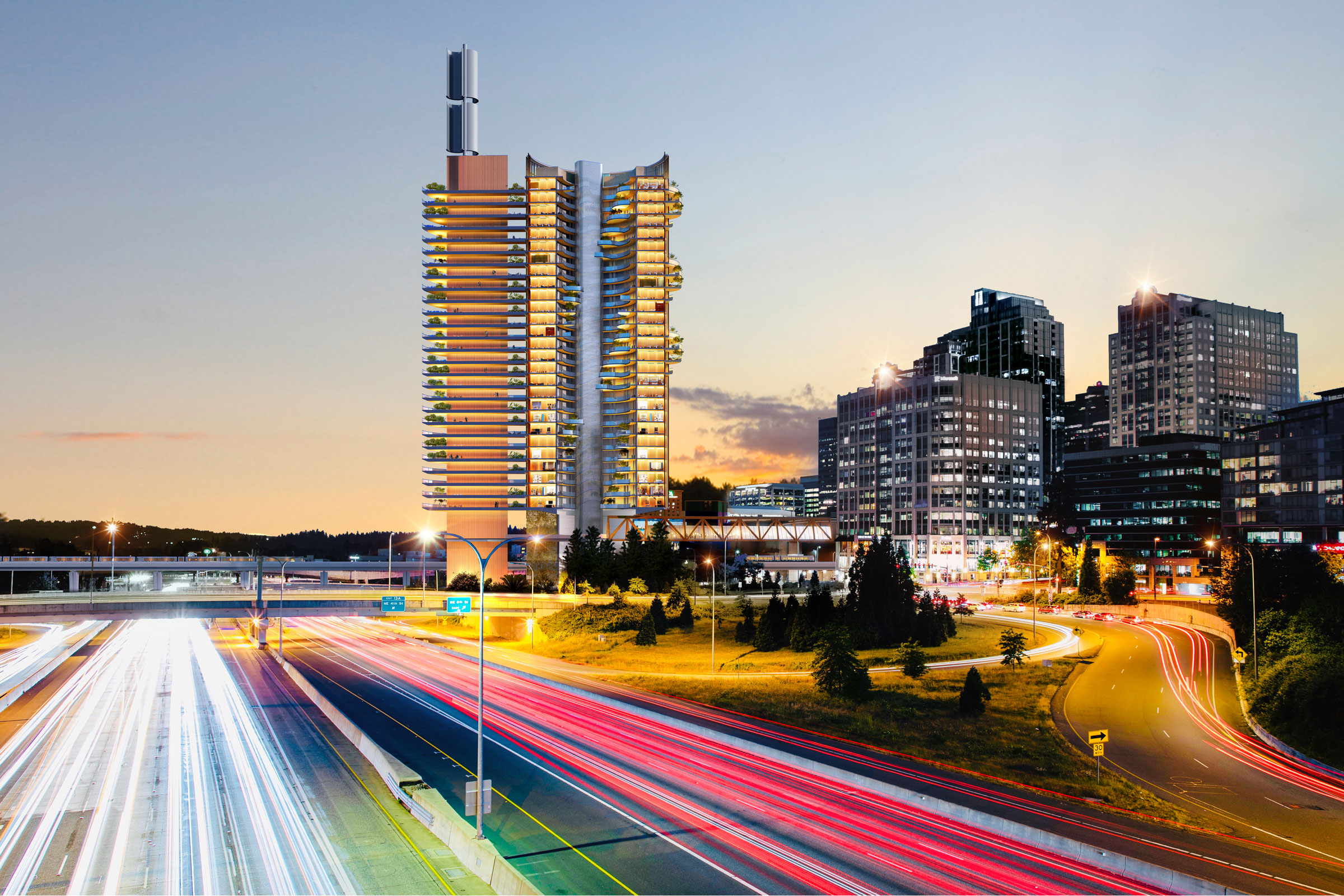
Rendering courtesy of B+H
The next generation of buildings will have short lives if they are built for just one purpose.
Yet, most buildings are still designed and built for a specific use or program mix. Adapting to new uses can involve significant retrofits and upgrades that can be expensive and empty leases mean lost revenue. Adaptive structural systems, like the unTower, can more than double a building’s useful life (220%) and reduce embodied and operational carbon footprint by 50% when compared to conventional new buildings, according to Design of Adaptive Load-Bearing Structures with Focus on Sustainability from the University of Stuttgart.
The economic advantages of the unTower result from three unique qualities:
Goldilocks Geometry
The unTower’s geometry provides a “Goldilocks” lease span, meaning the rentable floor plan depth falls in the sweet spot for residential, office, and hospitality uses.
The “wet cells” (i.e. the modular kitchens and bathrooms) are designed to hug the interior ring wall and can be easily subtracted or added to accommodate program use changes.
Shared Cost Items
A unique external core and shared functions and uses at podium level provide opportunities to share amenity and service costs with adjacent uses and buildings, reducing capital and operational costs.
Secured Appreciation
The economic viability of the unTower concept is achieved through the intrinsic concept of shared amenities, infrastructure, and circulation for all program elements and uses of the building. Spaces that can adapt to senior living, residential, office, and hotel are activated and brought to life through shared basic amenities and access to specialty program elements such as pool areas, co-work space, learning hubs, entertainment and gardens.
A Structure Inspired by Nature
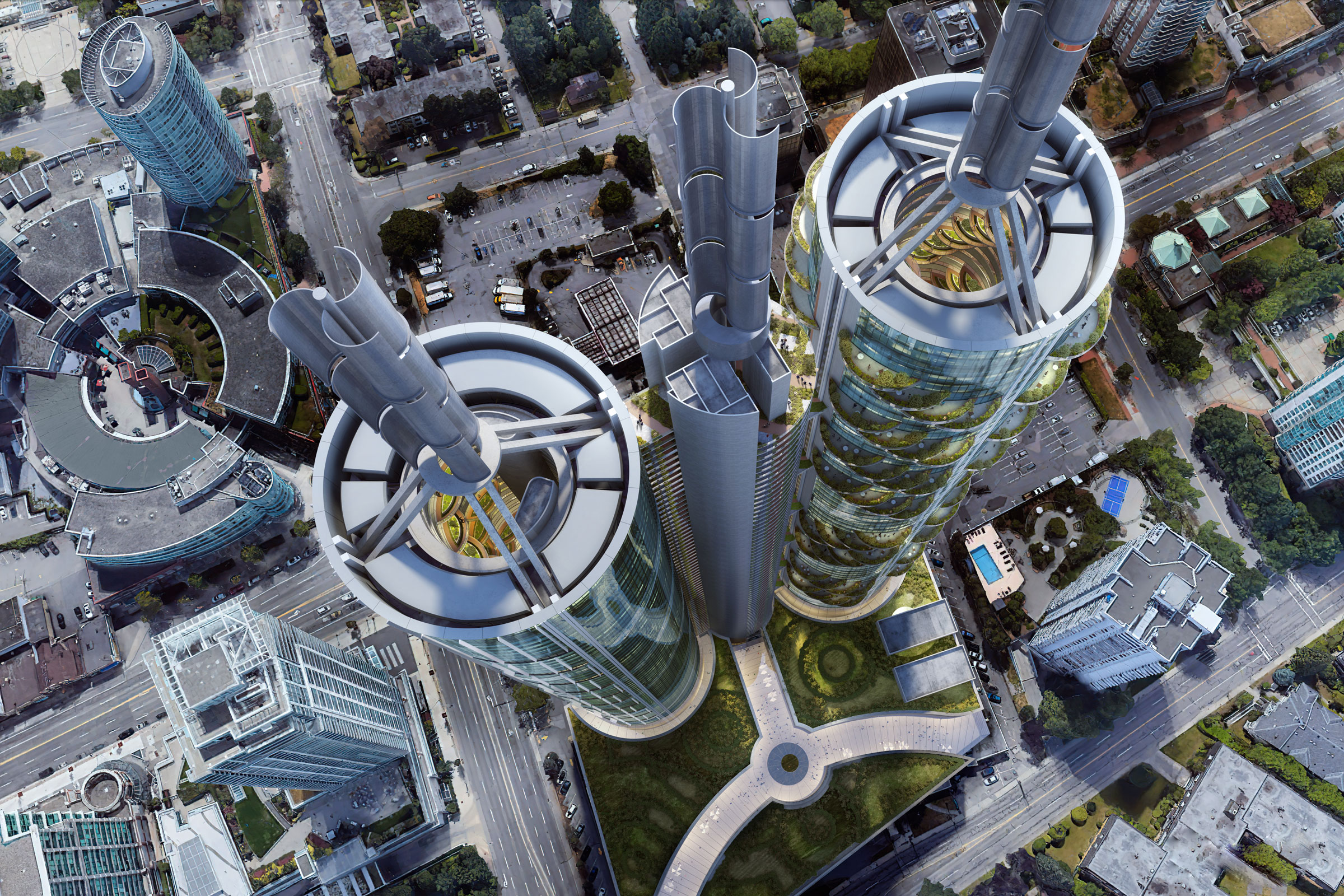
Rendering courtesy of B+H
The tower’s circular shape is inspired by design solutions with millennia of proof points. Several recent studies have found that the sight of curvilinear shapes activates a positive emotional response in the human brain. People are drawn to the beauty of spaces that echo nature’s curves. In addition, circular building enclosures minimize direct solar heat gain, increase occupant comfort, and can improve space utilization.
Nature at Every Floor
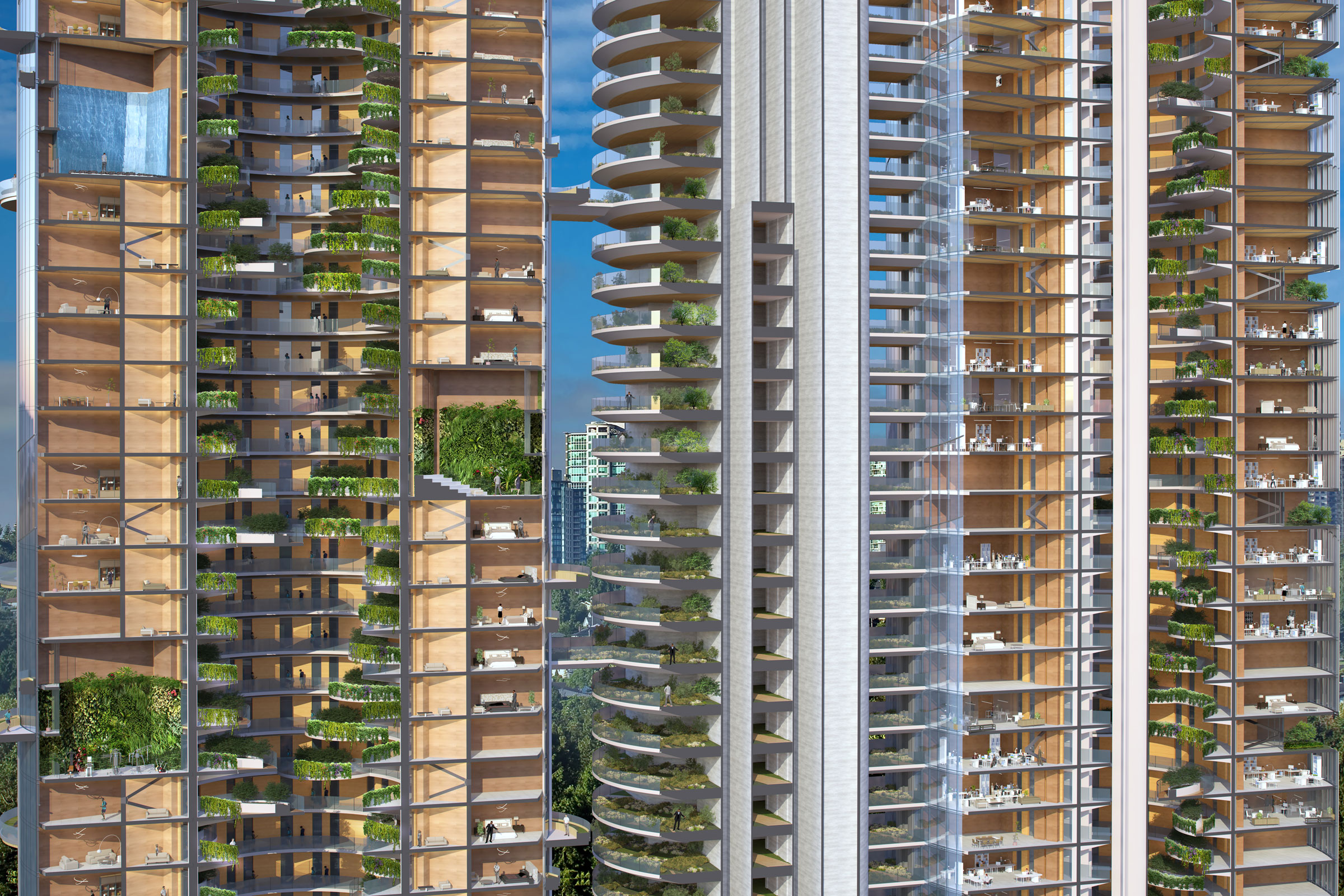
Rendering courtesy of B+H
Biophilia, our affinity for natural systems, embodies the type of spaces to which we are subconsciously drawn. Access to both views and sounds of nature are scientifically proven to lower breathing and heart rates and reduce the release of stress hormones. Buildings that promote holistic health and well-being are in high demand. Imagine what a reduction of five to 10 beats per minute will do to occupant health.
The ring formation offers ample opportunities for cross ventilation. With a hollow core or tall atrium, even rooms on interior walls can have access to diffuse daylight.
Balconies attached to individual units, atrium corridors, and the central core provide access to fresh air and outdoor gathering and relaxing space at every floor for all building tenants. The atrium is a central, character-building element of the tower design. It’s activated with an organic, curvaceous cascade of landscaped balconies and “hanging gardens” that bring nature indoors.
Sustaining Systems
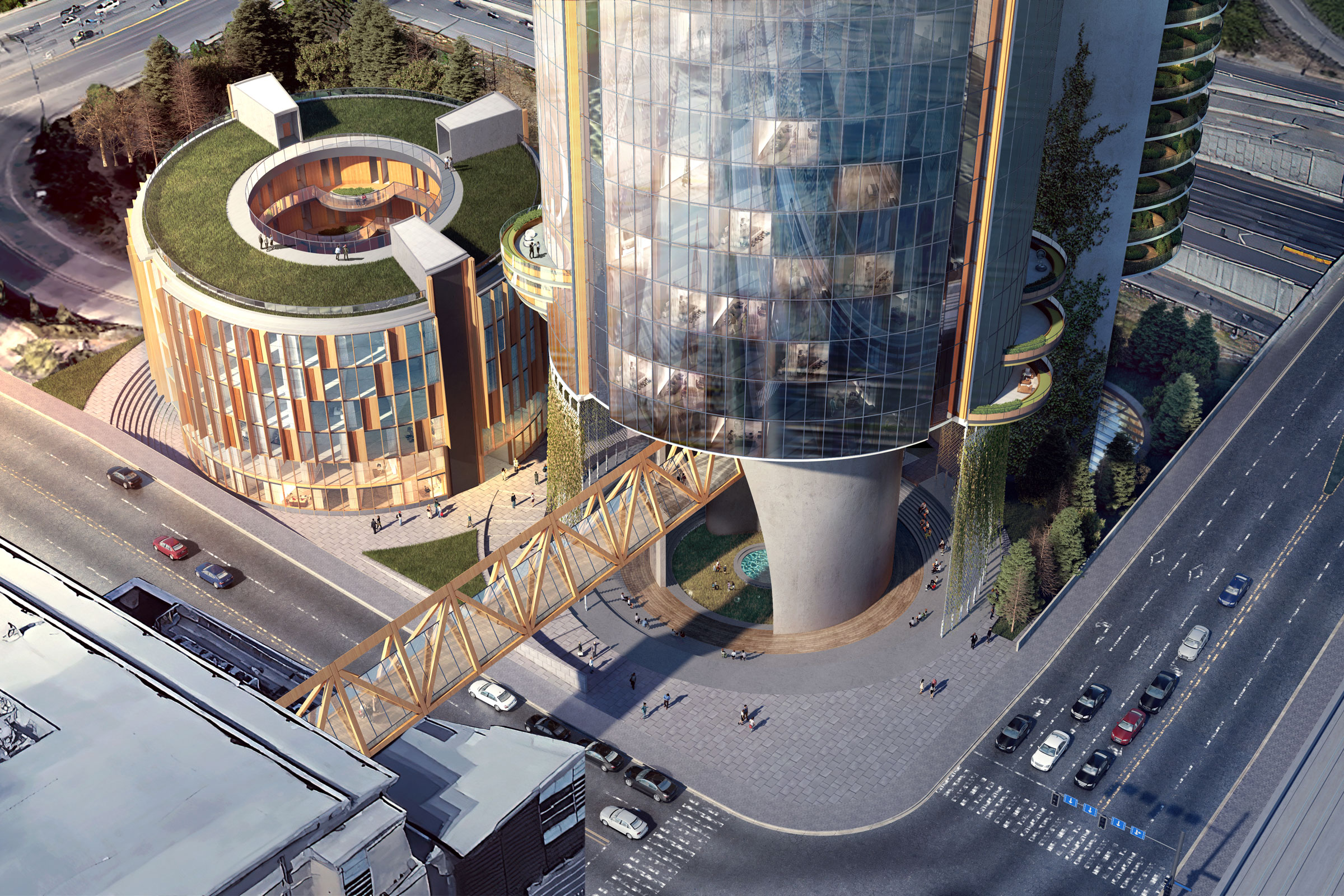
Rendering courtesy of B+H
An easy, simple geometry, repeatability, and a high integration of modular buildings systems are the key elements of successful, adaptable architecture.
Infinity Floor Plans
The point-symmetrical plan geometry enables a high degree of repetition, duplication, and opportunity for prefabrication, resulting in economies of scale that reduce construction time, cost, and exposure to volatility in the labor and materials markets.
The radial floor plan layout is organized around a central atrium that can be open or glass enclosed. The circular form makes adding or reducing spaces easy. Column-free lease spans accommodate all uses, on all floors.
In-floor Beams
The in-floor composite beam system allows the beam to be recessed within and flush to the underside of the slab. Segmented and curved in-floor edge beams define the perimeter, enabling reduced floor-to-floor heights. Thermal energy loads are reduced as there is less air to condition. Towers that are limited by proscribed building height can accommodate a greater number of stories, maximizing yield and generating material savings that result in lower first cost and lower embodied carbon.
Floor Assembly Choices
Floor assemblies can be built with 5-ply CLT panels, hollow core concrete, or long-span metal deck as inlays between in-floor beams. The project pencils across all material choices, ensuring compliance with local code and market conditions.
Scalable Design

Rendering courtesy of B+H
The unTower is designed for horizontal and vertical scalability. It includes flexibility to connect more than one tower to a single services core to the desired gross floor area and building heights as needed.
Depending on site-specific requirements, the number of towers and different building heights can be implemented with minimal design changes. Material selection is flexible, allowing the owner to select the most appropriate construction for project needs. With the ability to both shrink and grow the tower dependent upon site needs, the unTower can work at a variety of scales and site locations.
As socioeconomic behaviors continue to evolve rapidly and the purpose and future of downtowns are thrown into question, adaptability and flexibility of uses are increasingly desirable building traits. Until now, changing uses has required structural retrofits and significant MEP modifications. The unTower concept shows that a building can be sustainably designed with multiple tenant types in mind and space can be built out and adapted easily and economically with minimal work.
This concept was engineered by architects B+H in partnership with Coffman Engineers and Robert Bird Group.

